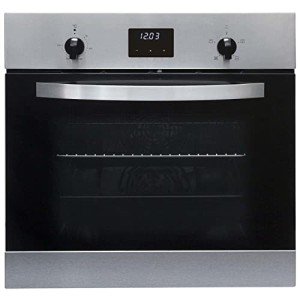11 Ways To Totally Defy Your Sales Ovens
The Comprehensive Guide to Sales Ovens: Understanding Their Importance, Types, and Best Practices
Sales ovens, a classification of commercial cooking equipment, are key gamers in the culinary and foodservice industry. These home appliances, developed to prepare food in large quantities effectively, are necessary in restaurants, catering services, and other food facilities. This short article explores the value of sales ovens, their types, and best practices for picking and using them effectively.
What Are Sales Ovens?
Sales ovens, broadly specified, are cooking devices utilized primarily in industrial cooking areas to prepare, bake, or heat various food products at scale. Their style enables them to handle higher volume cooking compared to basic property ovens. Given the nature of food service, sales ovens typically incorporate advanced innovations that promote speed, efficiency, and even cooking.
Significance of Sales Ovens in the Food Industry
Sales ovens play an essential role in food production for numerous factors:
- Efficiency: Sales ovens can cook food quicker and uniformly than conventional ovens, permitting chefs to prepare meals in less time.
- Consistency: With accurate temperature level controls, sales ovens guarantee that the food is prepared equally each time, preserving quality throughout countless portions.
- Versatility: Many sales ovens can manage various cooking approaches including baking, roasting, broiling, and even steaming, making them appropriate for diverse menus.
- Energy Savings: Modern sales ovens are typically created to be energy-efficient, lowering functional expenses for services.
Kinds Of Sales Ovens
The market uses a range of sales ovens, each suited for particular cooking requirements and kinds of food. Here are the most typical types:
Type of Oven
Description
Best For
Convection Ovens
Utilize a fan to distribute hot air, guaranteeing even cooking.
Baking and roasting items.
Combi-Ovens
A mix of convection and steam cooking, supplying versatility in cooking techniques.
Diverse menus needing steaming and baking.
Conveyor Ovens
Use a moving belt to continuously prepare food, ideal for high-volume operations.
Junk food and pizza.
Deck Ovens
Function separate compartments (decks) that can be separately controlled, offering high performance.
Artisan bread and pastries.
Rotisserie Ovens
Developed to slowly roast meat on a spit, offering tender and juicy results.
Roasted meats.
Choosing the Right Sales Oven
Picking the appropriate sales oven for a specific organization needs consideration of a number of aspects:
- Volume Needs: Assess the volume of food that requires to be prepared. Higher volume implies going with conveyor or combi-ovens.
- Menu Diversity: Understanding what type of meals will be prepared can guide the selection procedure. For example, a bakeshop might need a deck oven, while a restaurant might take advantage of a convection oven.
- Space Availability: Measure kitchen area to guarantee the ovens fit properly and have actually needed ventilation.
- Budget: Commercial ovens can differ significantly in rate, so develop a spending plan that thinks about long-lasting operational cost savings.
- Energy Efficiency: Opt for ovens that have energy ratings to keep energy costs workable.
Best Practices for Using Sales Ovens
Effectively running a sales oven involves more than simple usage. Here are some best practices to keep in mind:
Regular Maintenance: Schedule routine maintenance to clean and inspect the performance of the oven. This guarantees durability and performance.
Preheating: Always pre-heat the oven to the desired temperature level before placing food inside for consistent cooking outcomes.
Make use of Thermometers: For accuracy, utilize an oven thermometer to guarantee that temperature levels stay constant, particularly for baking.
Follow Cooking Times: Adhere to recommended cooking times based upon the kind of food being prepared. Ovens And Hobs may be needed for various ovens.
Avoid Overcrowding: Ensure adequate space around food items in the oven to allow for correct air flow.
The Future of Sales Ovens
As innovation advances, so do the abilities of sales ovens. Developments such as wise innovation, energy-efficient designs, and enhanced safety features are ending up being more prominent. These developments promise to enhance cooking performance while also satisfying sustainability objectives.
Frequently Asked Questions about Sales Ovens
Q1: How do I clean my sales oven?
A: Regular cleansing includes removing any food particles, wiping down surface areas with non-corrosive cleaners, and following specific cleansing suggestions from the maker.
Q2: What's the lifespan of a commercial oven?
A: Typically, a well-maintained business oven can last anywhere from 10 to 20 years, depending on usage and upkeep.
Q3: Can sales ovens be utilized for baking?
A: Yes, numerous kinds of sales ovens, especially convection and deck ovens, are specifically developed for baking a series of items.
Q4: Are there energy-efficient choices for sales ovens?
A: Yes, numerous producers provide energy-efficient models that lower energy intake without sacrificing performance.
Q5: How often should I carry out upkeep on my sales oven?
A: It's a good idea to conduct regular maintenance checks every month or quarter, depending upon use levels. In addition, a detailed inspection needs to take place at least yearly.
Sales ovens are essential in the modern-day culinary landscape. Their ability to cook big quantities of food efficiently makes them essential for dining establishments, catering services, and other food facilities. By comprehending the different types, picking the best oven, and adhering to best practices, food service organizations can optimize their cooking procedures, boost their offerings, and eventually thrill their clients with impressive culinary productions.
